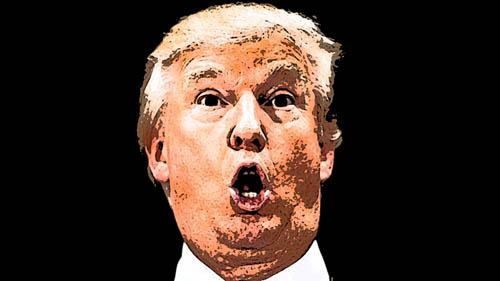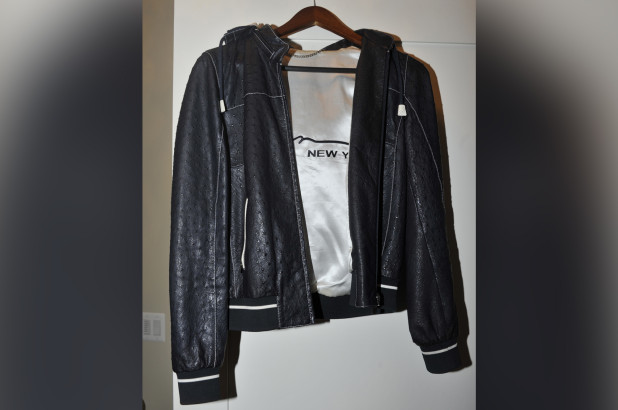
It’s been a while since I’ve read a Frank Rich column, but this is a pretty good one — “In 2008, America Stopped Believing in the American Dream.”
That loose civic concept known as the American Dream — initially popularized during the Great Depression by the historian James Truslow Adams in his Epic of America — has been shattered. No longer is lip service paid to the credo, however sentimental, that a vast country, for all its racial and sectarian divides, might somewhere in its DNA have a shared core of values that could pull it out of any mess. Dead and buried as well is the companion assumption that over the long term a rising economic tide would lift all Americans in equal measure. When that tide pulled back in 2008 to reveal the ruins underneath, the country got an indelible picture of just how much inequality had been banked by the top one percent over decades, how many false promises to the other 99 percent had been broken, and how many central American institutions, whether governmental, financial, or corporate, had betrayed the trust the public had placed in them. And when we went down, we took much of the West with us. The American Kool-Aid we’d exported since the Marshall Plan, that limitless faith in progress and profits, had been exposed as a cruel illusion.
Unlike 9/11, which prompted an orgy of recriminations and investigations, the Great Recession never yielded a reckoning that might have helped restore that faith. The Wall Street bandits escaped punishment, as did most of the banking houses where they thrived. Everyone else was stuck with the bill. Millennials, crippled by debt and bereft of Horatio Alger paths out of it, mock the traditional American tenet that each generation will be better off than the one before. At the other end of the actuarial spectrum, boomers have little confidence that they can scrape together the wherewithal needed to negotiate old age. The American workers in the middle have seen their wages remain stagnant as necessities like health care become unaffordable.
It wasn’t just the financial crisis, and a lot of people had seen through the sham a long time before 2008. It’s also the case that a lot of people still haven’t seen it, but I’ll come back to that.
Trump’s genius has been to exploit and weaponize the discontent that has been brewing over decades of globalization and technological upheaval. He did so in part by discarding the bedrock axiom of post–World War II American politics that anyone running for president must sparkle with the FDR-patented, chin-jutting optimism that helped propel John F. Kennedy and Ronald Reagan to the White House. Trump ran instead on the idea that America was, as his lingo would have it, a shithole country in desperate need of being made great again. “Sadly, the American Dream is dead,†he declared, glowering, on that fateful day in 2015 when he came down the Trump Tower escalator to announce his candidacy. He saw a market in merchandising pessimism as patriotism and cornered it. His diagnosis that the system was “rigged†was not wrong, but his ruse of “fixing†it has been to enrich himself, his family, and his coterie of grifters with the full collaboration of his party’s cynical and avaricious Establishment.
By contrast, Hillary Clinton’s message was that everything was basically just fine and only needed a little tweaking, which didn’t exactly resonate with voters in 2016. But I’ll come back to that, too.
At the New York Times, Michael Tomasky has some advice for people alarmed at all the talk from the young folks about socialism.
You want fewer socialists? Easy. Stop creating them. … As I noted recently in The Daily Beast, the kind of capitalism that has been practiced in this country over the last few decades has made socialism look far more appealing, especially to young people. Ask yourself: If you’re 28 like Alexandria Ocasio-Cortez, the New York congressional candidate who describes herself as a democratic socialist, what have you seen during your sentient life?
Tomasky listed several things, such as growing inequality and the 2008 meltdown, profit hoarding and job losses. As we move toward a “gig economy” the kind of secure permanent job with benefits that used to be the foundation of a middle-class life has become more and more elusive for the young folks. Between insecure employment and student loans, a lot of people just feel exploited.
I could go on like this for 20 paragraphs. Many more, in fact. But you get the idea. Back in the days when our economy just grew and grew, we had a government and a capitalist class that invested in our people and their future — in the Interstate highways, the community colleges, the scientific research, the generous federal grants for transportation and regional development.
And, funny thing, during all this time, socialism didn’t have much appeal.
But those days are gone, and people who are young adults today don’t remember them. What they see is that the system isn’t working for them and ultimately isn’t sustainable for anybody.
And although this is a widespread problem, inequality is worse in the U.S. than in Europe.
Things aren’t necessarily working out for older folks, either.
For a rapidly growing share of older Americans, traditional ideas about life in retirement are being upended by a dismal reality: bankruptcy.
The signs of potential trouble — vanishing pensions, soaring medical expenses, inadequate savings — have been building for years. Now, new research sheds light on the scope of the problem: The rate of people 65 and older filing for bankruptcy is three times what it was in 1991, the study found, and the same group accounts for a far greater share of all filers.
Driving the surge, the study suggests, is a three-decade shift of financial risk from government and employers to individuals, who are bearing an ever-greater responsibility for their own financial well-being as the social safety net shrinks.
The transfer has come in the form of, among other things, longer waits for full Social Security benefits, the replacement of employer-provided pensions with 401(k) savings plans and more out-of-pocket spending on health care. Declining incomes, whether in retirement or leading up to it, compound the challenge.
Every bleeping idea the Powers That Be ever come up with ends up being great for the rich and bad for everybody else. Ever notice that?
Oh, my goodness, this just in:
Senator Marco Rubio unveiled a family leave plan Thursday that would require new parents to pay for time spent with their infant children by borrowing from their Social Security retirement benefits early.
The Economic Security for New Parents Act would allow parents to use their retirement benefits for up to 12 weeks, and would be paid back by delaying retirement for three to six months per child. In two-parent households, benefits are transferable among spouses.
What kind of asshole even thinks of something like that?
Back to Frank Rich:
It was during the Great Recession that it also became clear how oblivious — or complicit — both major parties’ Establishments were when it came to heists by those at the top. To take just one example of this culture at work: In 2011, with much fanfare, President Obama convened a new jobs council, which, in a bipartisan gesture, he put in the charge of a prominent Republican CEO, Jeffrey Immelt of GE. No one in the Obama White House seemed to know or care, as the New York Times would soon report, that GE had laid off a fifth of its American workers since 2002 and, in 2010, had paid almost no federal taxes on $14.2 billion of profit. Immelt remained in place at the jobs council nonetheless. Unlike such frauds as Enron and its current copycat, Theranos, or the robber-baron enterprises of the more distant past, GE was one of the most widely admired American corporations, if not the most widely admired, for decades. Founded by Thomas Edison, it was one of the original dozen components of the Dow Jones industrial average at its inception in 1896. In the 1950s and early ’60s, GE’s image and Reagan’s were burnished in tandem when the future president hosted General Electric Theater on CBS. In the 1980s and ’90s, Immelt’s immediate predecessor, Jack Welch, was lionized as America’s wisest economic guru. Today, GE’s shareholders have been financially shafted along with its workers, and in June it was booted off the Dow. The record Immelt left behind as Obama’s job czar, it should be noted, is no more impressive than that as GE’s CEO: He accomplished nothing, at one point going for a full year without convening the council at all. But there has been no accountability for his failures in either the private or public spheres, let alone reparations.
We have created a new entrenched aristocracy, a class of people who are too big to fail. And while I still like Barack Obama, and consider him to be a decent and intelligent man, a lot about his administration just plain fell short of its potential. And this is a good example.
I wrote a post in August 2016 about the fact that the Democrats were maddeningly oblivious to the national mood. That post linked to an Andrew O’Hehir column that said Democrats were whistling past the graveyard if they thought that Clinton’s presumed election would set the world back to normal. O’Hehir said,
But what kind of “normal†are you so happy about? The paralysis and dysfunction of the entire last decade? To pretend that such an outcome — the candidate who is widely disliked and mistrusted defeating the candidate who is widely feared and despised — does anything at all to address the structural and ideological crisis that is eating away at both parties and the bipartisan system represents an epic level of denial.
“Epic level of denial” pretty much describes Democratic Party centrists and the leadership that insisted Hillary Clinton had to be the nominee. And there’s a lot of denial out there still. O’Hehir wrote recently,
Essentially, Democrats of the Bill Clinton era cut a deal with finance capital and the national-security state: On one hand, an economic policy based on free trade, deregulation and open markets, interlocked with an expansionist, interventionist foreign policy, both ceded to the control of technocratic experts. On the other, a widening agenda of civil rights protection and modest social reform programs at home, coupled with continued funding of the welfare state, albeit in reduced and partially privatized form.
As I wrote last week, that combination seemed to work well for a while, or at least it helped elect two Democratic presidents to two terms apiece. It also hollowed out the party from within and led to a devastating series of defeats in midterm elections and state legislatures, leaving Democrats in their worst nationwide position since Herbert Hoover’s administration, despite the undeniable fact that their policy positions are far more popular than those of the Republicans. With the sudden shift in the political wind of 2016, the true nature of the grand bargain suddenly seemed unmentionable.
But Nancy Pelosi is out there even now soliciting donations with calls to “protect President Obama’s legacy,” and even those of us who are fond of Barack Obama don’t want to just go back to his legacy. We’ve got to do a lot better. See also another recent O’Hehir column, Democratic moderates fear the “socialist left†will wreck the party: They want to keep that gig.
The crazy thing is that I strongly suspect that white working-class voters might not be as averse to the progressive agenda as the centrists assume. Sitting here in Trump Country and watching campaign ads — the Missouri primaries are tomorrow — I see a lot of negative ads that basically make Democrats out to be something like cockroaches with especially loose morals. But that tends to work because the bleeping Democrats don’t seem to stand for anything. They’re like a blank slate waiting to be written on.





